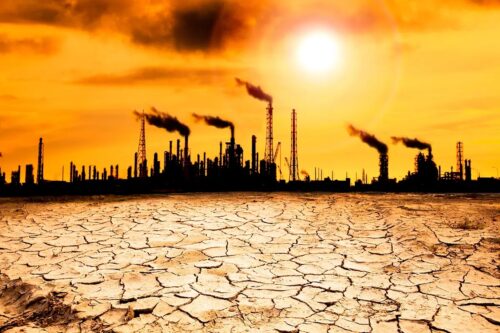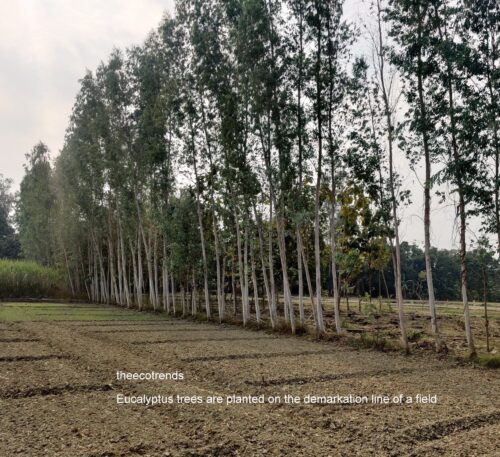Human activities of pollution are modifying the natural process of greenhouse effect. The advent of the Industrial Revolution in the 1700s boosted up the activities of burning of fossil fuels like coal, oil and natural gas which released lots of heat absorbing gases into the atmosphere.
Clearing of land for agriculture or for urban settlements, wiped out the vegetation that acted as ecological sink for some of those gases like carbon dioxide.
The heat absorbing gases accumulate in high concentrations in the upper atmosphere around the earth extending up to 100 km above its surface and act as glass panels of a green house. They allow much of the short-wave solar radiation to reach to the earth surface but stop much of the long wave infrared rays against escaping out as heat. They absorb these infrared radiations and then re-radiate most of them back to the earth surface. Thus, the temperature of the atmosphere rises gradually causing an unnatural heating effect which is called as the Global Warming. Global warming is the enhanced greenhouse effect due to greater accumulation of GHGs in the upper atmosphere.
The Global Warming can be prevented and controlled by following important measures-
1. Reduction on the consumption of fossil fuels by depending on non- conventional renewable sources of energy like wind, sunlight, nuclear and bio- energy.
2. Checking the GHGs at the source of their production and disposing them elsewhere.
3. Collection or recovery of GHGs already present in the atmosphere and their disposal.
4. Learning to adopt and accept the changes in the climate.
5. International co-operation for reduction of GHGs emission with full majority.
Indian Efforts for controlling Climate Change
The Indian Government has introduced landmark environmental measures in the direction of averting climate change due to GHG Emissions. Some of these landmark initiatives are: cleansing of rivers, enhancement of forestation, installation of significant capacity of hydro and renewable energy technologies, and introduction of world’s largest urban fleet of Compressed Natural Gas (CNG) Vehicles in Delhi, its capital city.
Simultaneously, the Indian Government has introduced Clean Coal Technologies- like Coal Washing, and introduced the use of cleaner and lesser carbon intensive fuel. The introduction of auto Liquefied Petroleum Gas (LPG) and setting up of Motor Spirit- Ethanol blending Projects in many selected states are landmark initiatives in this direction.
The above processes and initiatives are affirmed by democratic and legislative processes. These projects have been implemented in India by committing additional resources as well as by re-aligning new investments. These actions consciously exhibit the commitment of the Indian Government to the United Nations Framework Convention on Climate Change (UNFCCC), and the re-alignment of economic development to a more climate- friendly way.
The Third World Interests
It was the industrial revolution which led to large scale production of goods and services during the 18th century in the economic world. This revolution started in Britain through the application of machinery, advanced technology and employment of a great workforce. In the United States the Industrial Revolution started during the first half of the 19th century. It followed in other nations in the second half of the same century.
Many countries of the world have yet to develop their industries and hence these countries are very poor. Going through these lines we may now conclude that industrialization plays big roles in the economic development of nations.
Industrialized and already developed countries consume a disproportionate amount of the Natural Resources of the world. Thus, the standard of the people of these countries depends very much on the continued supply of resources and energy. The developed countries have merely the 19 percent of the population of the world but they consume more than 75 percent of the energy of the world.
The beginning of the evolution of industries in India, after the Independence, was marked by the Industrial Revolution Policy in 1948.The Policy was further revised in 1956 through which the Public Sector got strategic Role in the economy of the country.
The Industrial Policy Initiative undertaken by the Central Government in July 1991, made the Indian Industry to compete on International Levels. As a result, an Industrial Licensing Policy was adopted in 1991. It was followed by a number of steps like Liberalization of Foreign Investment in Banking Sector, Technological Collaboration with other countries, Creation of Special Economic Zones and, Simplification of Industrial Licensing and Promotion of Exports etc.
Feature Image: New Scientist




